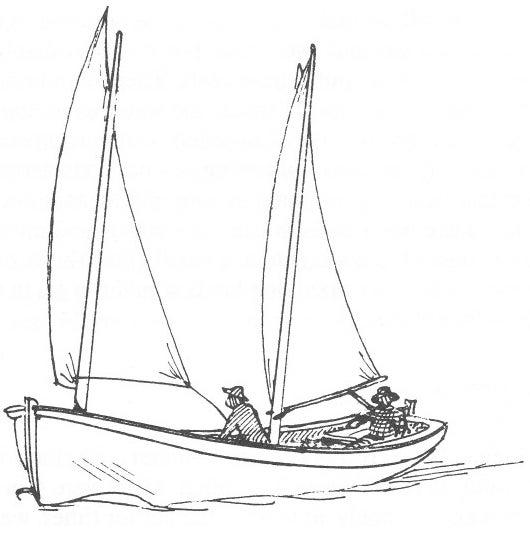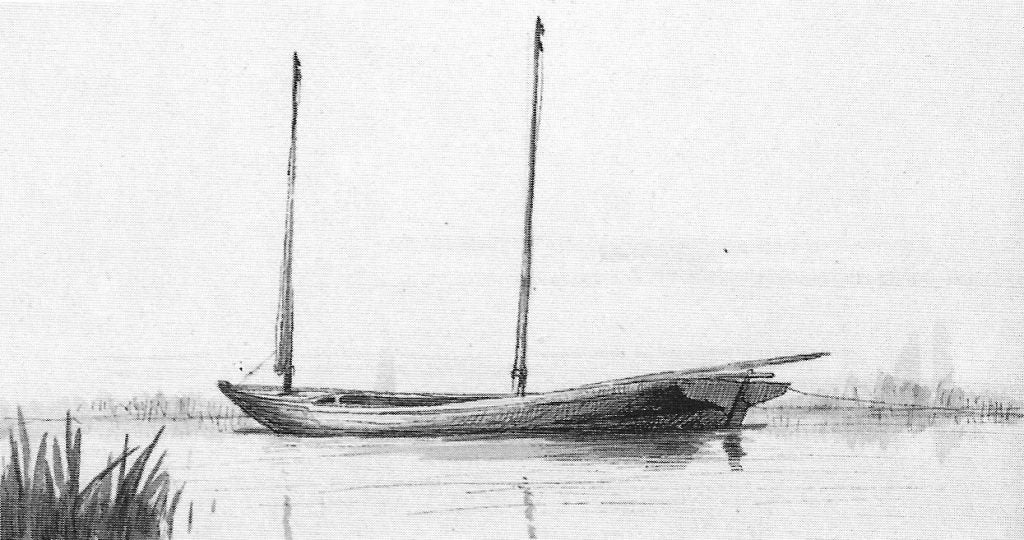
Periaugers (piraguas or pettiaugers) were medium-sized vessels since they were larger than split-dugout canoes but smaller than sloops and schooners (Alford 1990:31). Periaugers are derivatives of pirogues, a type of African canoe, but are larger. These vessels were one or two masted vessels with both fore and aft rigs that were somewhere between split-dugouts and sloops in size. Periaugers were also flat bottomed, allowing them to travel within the winding river systems of North and South Carolina (Still and Stephenson 2021:40).
There are no surviving examples of a periauger, however there are records describing these boats as being generally between three and six tons. Using these measurements, historians and archaeologists have estimated that a five ton vessel with an eight foot beam would be around 35 feet in length and have a draft less than 4 feet (Still and Stephenson 2021:40).
Periaugers were used mainly to trade up and down the rivers as shown by records indicating they could haul up to 100 barrels or animals such as horses and cattle. Beyond this riverine trade, these boats were also used for fishing, trading with ports and ships, and possibly even traded along the coast (Still and Stephenson 2021:40).

During his time as a boatbuilder, Creef designed the vessel that would be known as the shad boat. The shad boat was a combination of dugout canoe designs and planked-based designs. The construction techniques used created a vessel that was wide in the center, which allowed more fish to be carried, but still shallow enough to sail through the shallow inlets. These features led to the vessel becoming popular all along the North Carolina coast (Alford 2004:18-22).
By Caleb O’Brien
